Introduction
Rani Lakshmibai, popularly known as “Rani of Jhashi,” is known in Indian history as a skillful ruler and a loyal patriot. Her indomitable spirit and bravery continue to inspire people around the world. Her real name was Manikarnika Tambe, but we know her in history as “Rani Lakshmibai of Jhansi”.
At a tender age, Lakshmibai displayed exceptional courage and determination. She received training in martial arts, horseback riding, and archery, defying traditional gender norms of her time. This prepared her for the challenges she would face as a leader and warrior.
Manikarnika changed the male-dominated culture which believed that woman should be limited to hearth and child. Lakshmibai grew up with a thirst for knowledge and a strong sense of justice.
The name of Rani Lakshmibai comes in the few instances where a woman participated in the wars of the world. It is surprising if you have never seen her picture fighting with a child on her back in a history book or her statue in a public place.
It is said that taking effort is only in our hands, success or failure is in hands of God. Lakshmibai honestly fought for freedom, regardless of success or failure. In this article, we are going to learn about her efforts.
The story of Lakshmibai takes a significant turn when her husband, Maharaja Gangadhar Rao, passed away, leaving her in charge of the kingdom of Jhansi. In the face of British imperialism and the Doctrine of Lapse, which threatened to annex Jhansi, Rani Lakshmibai fearlessly took up arms to defend her land and its people.
This biography of Rani Lakshmibai will tell you about her extraordinary life. It will explore her valiant efforts to safeguard her kingdom and her fearless fight for independence. Join us on this inspiring journey as we uncover the legacy of one of the most iconic freedom fighters of India.
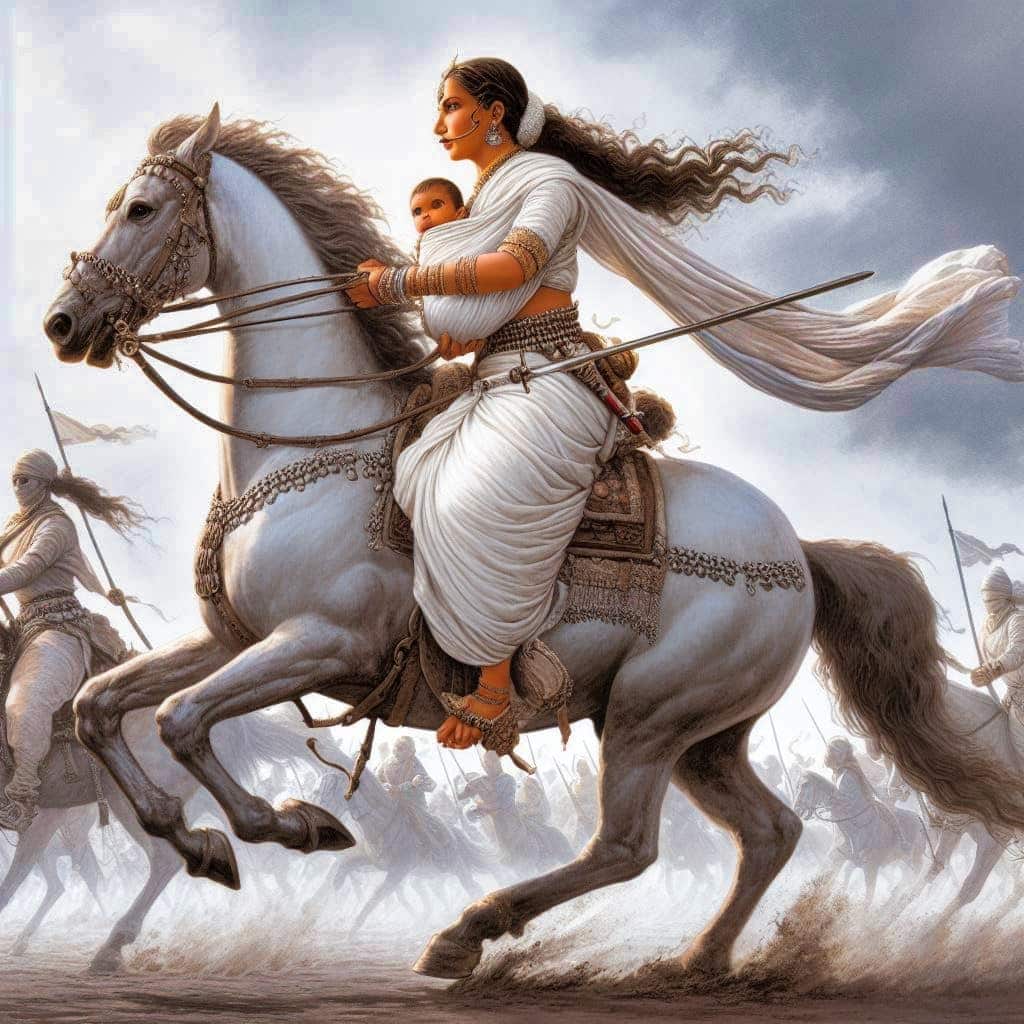
Brief Information
|
Information
|
Details
|
|---|---|
|
Identity
|
Manikarnika Tambe fought battles during the revolt of 1857 CE. After marriage, her husband renamed her as “Rani Laxmi Bai Nevalkar.”
|
|
Important work
|
He struggled against British rule and fought three wars against the British government
|
|
Names
|
|
|
Birth
|
At Varanasi on 19th November 1835
|
|
Parents
|
Mother: Bhagirathi Bai, Father: Moropant Tambe
|
|
Marriage
|
In the year 1842, with the king of the princely state of Jhansi, Gangadharao Nevalkar
|
|
Children
|
Damodarrao, Anandrao (adopted)
|
|
Death
|
On the day of 18th June 1858 at Gwalior, Madhya Pradesh
|
Indian Background
During that time, in the Indian subcontinent, the British monarchy was well established themselves.
The Marathas, who were unbeatable for almost 50 years before British rule, were also subordinate to the East India Company.
The military base of the Peshwa, known as “Shaniwar Wada.” That stronghold of the Maratha was also under the rule of the East India Company.
Peshwa surrendered to the British East India Company. Therefore, Peshwa Bajirao II had to move to Varanasi after leaving Shaniwar Wada. Chimaji Appa was the younger brother,
Birth
During their time in Varanasi, Moropant and Bhagirathibai had Kanyaratna. Moropant named their daughter as “Manikarnika”.
Manikarnika means jeweled earrings. Elder people and friends mostly addressed her as Manu at home. Meanwhile, Chimaji Appa died suddenly while in Varanasi.
Hence, Peshwa again went to the Bithoor fort in Uttar Pradesh. Moropant also left for Bithur to assist the Peshwas in their Jahagiri work there.
Childhood
Manikarnika spent her childhood in the palace of the Peshwas. Tatya Tope and son Nana Saheb (adopted) of Peshwa were childhood friends of Manikarnika.
From her childhood, Manikarnika showed an adventurous and daring spirit. Hence, the Peshwa called her “Chabili”.
Her parents always told her inspiring stories of patriotic women like Rani Durgavati, Kittur Chennamma and Rani Velu Nachiyar. As Marathi people, her parents also told her glorious pasts and stories of Chhatrapati Shivaji, Sambhaji Maharaj, etc. They also emphasized the importance of patriotism and independence.
At that time, Indian people did not educate girls. In contrast, Manu was fond of reading and writing. Not only this, she excelled in sports like sword-craft, Mallakhamb and horse riding.
Married to Maharajah of Jhansi
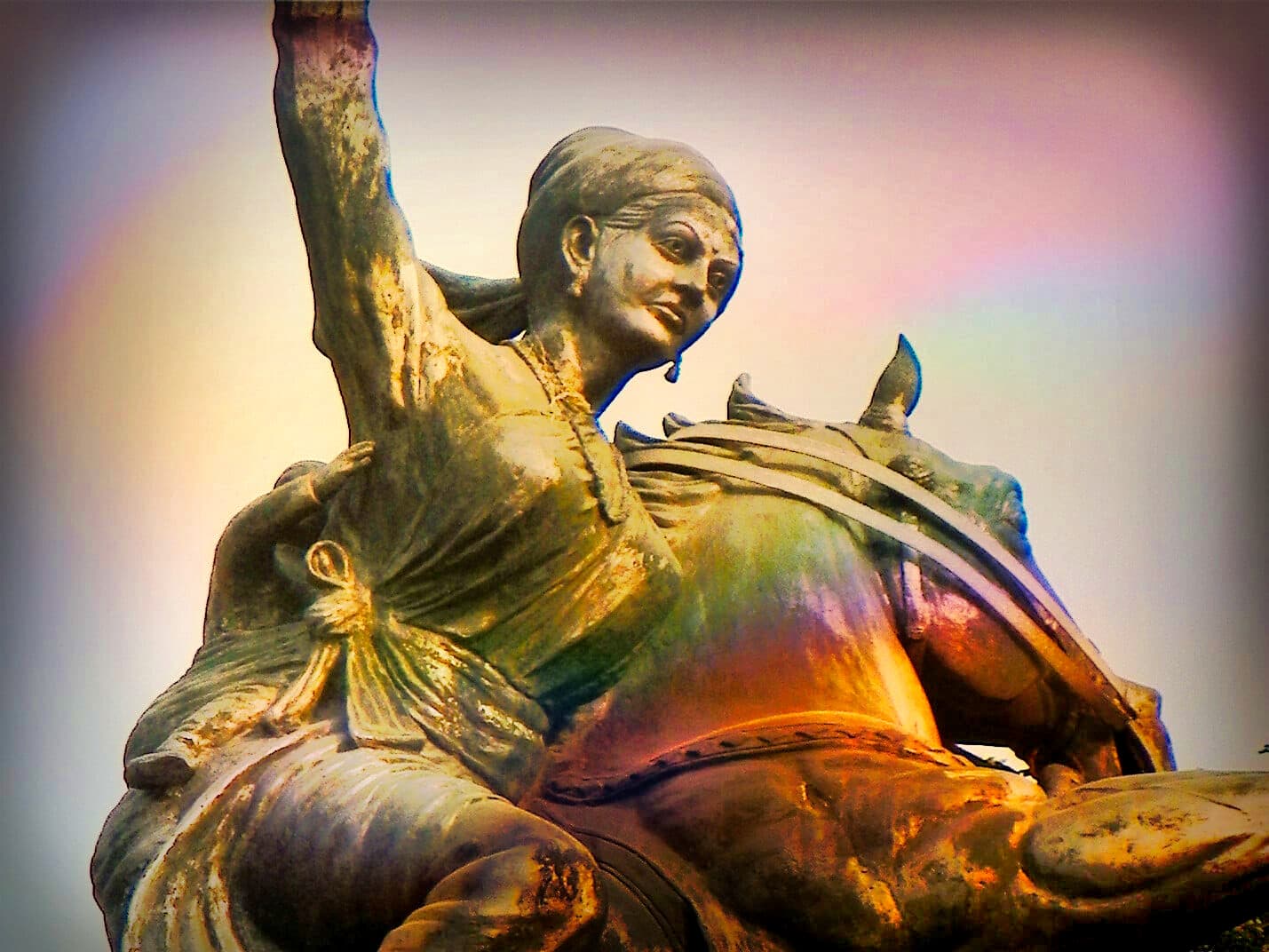
In between 1756 CE to 1759 CE, Peshwas appointed Raghunath Hari Newalkar to Jhanshi, the Maratha Newalkar dynasty ruled Jhanshi.
At the time of Gangadharrao, as Maharajah, he stood strong against British rule. Although the British East India Company took over Jhanshi, the governance here was under the Newalkar family.
On May 12, 1842 CE, Manikarnika was married to Maharajah Gangadharrao Newalkar of Jhansi. After her marriage, as per the Maratha Tradition of Jhansi, Gangadharrao named her Lakshmibai.
Married Life
The first few years in a married life of Lakshmibai were blissful, but after that she had to face many sorrows.
Birth and untimely death of son Damodar
In the year 1851, Gangadharrao and Lakshmibai had a son. Her husband named him as Damodar. But that child died prematurely.
After the premature death of his son, Gangadharrao adopted the son of his cousin and named him Anandarao. In memory of his son, Maharajah reamed Anandarao as Damodar Rao.
Personality
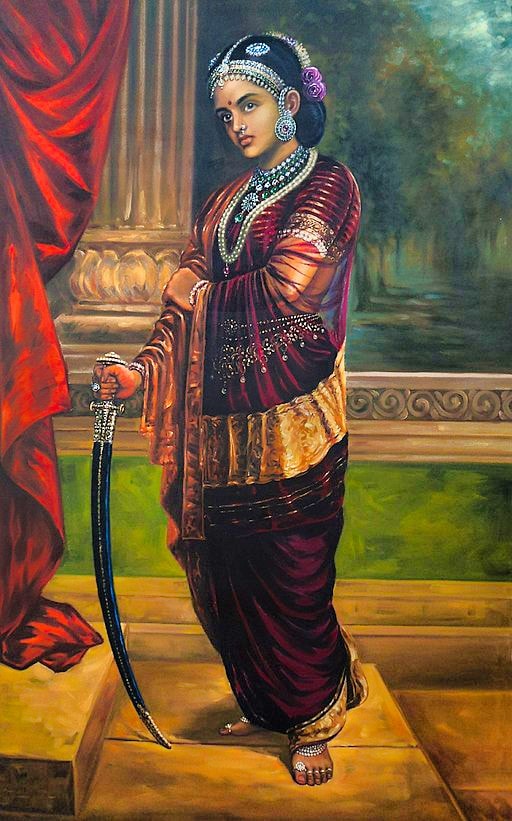
She was the furious rebellion in the first war of Independence. She is remembered for her courage and determination.
Like the Marathi writer Vishnu Bhatt Godse, Rani Lakshmibai was fond of steeplechase (Hurdle horse racing). Also, she used to exercise every morning before breakfast.
Simple living and the intelligence and modesty that graced it characterized her personality.
Hobbies and interests
Even after marriage, Lakshmi Bai was fond of horse riding. There was a stable in the compound of his palace, in which there were high-class horses. Queen Lakshmibai especially loved Pawan, Sarangi, Badal horses among them.
Some believe that Badal among these horses jumped from the fort wall and took Rani Lakshmi Bai out of the fort, safe from the enemies.
Strongly Opposed Tyrannic Doctrine of Lapse
Maharaj Gangadhar Rao died in November 1853. Subsequently, as Damodarrao was an adopted son, Governor General Lord Dalhousie invalidated his claim to the throne of Jhansi.
Lord Dalhousie introduced the policy of the Doctrine of Lapse. Upon hearing news about this policy, Lakshmibai angrily shouted.
I will not give my Jhansi!
The words of Lakshmibai caused a silence in the entire court.
In March 1854, the East India Company ordered Lakshmibai to take the pension of Rs. 60,000 per annum and leave the palace and fort. Rani Lakshmibai refused to leave palace and started preparing for the next uprising.
Other Indian Provinces where this Policy Applied
Under policy of Doctrine of Lapse, British targeted many small provinces and subjected them to the British East India Company. They strictly enforced this policy during the reign of British General Dalhousie from 1848 to 1856.
Important Barton like Satara (1848), Jaitapur and Sambalpur (1849), Nagpur and Jhansi (1854), and Udaipur (Chhattisgarh), Oudh (1856), Tore and Arcot (1855) merged with the British East India Company under this policy.
Background of war of 1857 before participation of Rani Lakshmibai
This uprising started in Meerut on May 10, 1857. Lakshmibai asked captain Alexander Skene to send a contingent of troops for self-defense.
In the city, Lakshmibai organized the Haldi-Kunku program to inspire people of Jhansi. She also told people that the British are cowards and there is no need to be feared of them. In this program, all the women of Jhansi joined.
Massacre of British Officers at Star Fort by Rebels
By this point, Rani Lakshmibai was unhappy with the idea of rebelling against the British. In June 1857, the local Bengal infantry rebels captured the British fort called Star Fort.
They looted the treasure and ammunition, then asked the British officers to surrender their weapons. After British officers laid down weapons, mutinies killed them, along with their wives and children.
According to British Army Doctor Thomas Lowe, Rani Lakshmibai was also involved in this murder.
But there was no proof to support the participation of Lakshmibai. So it must be the way to defame the queen after her death, because she was a strong opponent to British rule.
Protection of the throne of Jhansi by Lakshmibai
Anyway, after that, those rebels collected extortion from Lakshmibai and threatened to blow up the palace.
After that, she wrote to Saugor Division Commissioner Major Ersky and Lakshmi Bai gave detailed information about the incident. In reply, Ersky asked him to manage the city until the British government appointed a new director.
In-between period, a clash happened between the Lakshmibai and their home rivals. In this clash, Lakshmibai led the side of price Damodar and on the other side there was the nephew of Gangadharrao.
As Damodar was minor and he had no direct blood relation with Newalkar family, so the nephew of Gangadharrao claimed the throne of Jhansi. But, due to Lakshmibai failed the efforts of the enemy to capture the throne of Jhansi.
Rani started supporting the revolutionaries to save Jhansi against the arbitrary rule of the British.
Revolutionary marches and revolts in India before the Battle of Jhansi
Begum Zeenat Mahal of the last Mughal emperor, the lawyer of Nana Saheb Ajimullah, King of Shahagarh, Tatya Tope, Begum Hazrat Mahal of Nawab Wajid Ali Shah, Mughal Emperor Bahadur Shah himself, Raja Mardan Singh of Wanpur, etc. All such important people of India tried to help Rani Lakshmibai.
Even before the battle of Jhansi, there was a major rebellion in Meerut and Kanpur. On May 4, 1857, a major revolt broke out in Kanpur. Then, another rebellion started in Meerut in year 1857 and its day was according to Wikipedia, its May 10 and according to Webdunia its May 7.
The British captured many places like Shahgarh, Sagar, Gadkota, Wanpur, Talbehat, Madkheda and Madanpur, and massacred the rebels mercilessly. After this small revolt, the British army encamped near Kaimasan Hill.
British Attack on Jhansi Fort
In January 1858, the British government announced that they were sending troops to control Jhansi. But the advisers of Rani Lakshmibai of Jhansi wanted to gain independence from British rule.
Also, the delay in arrival of the British forces boosted the confidence of the army of Rani Lakshmibai. During this time, ministers and generals of the army in the fort of Jhansi stocked well with ammunition and excellent guns.
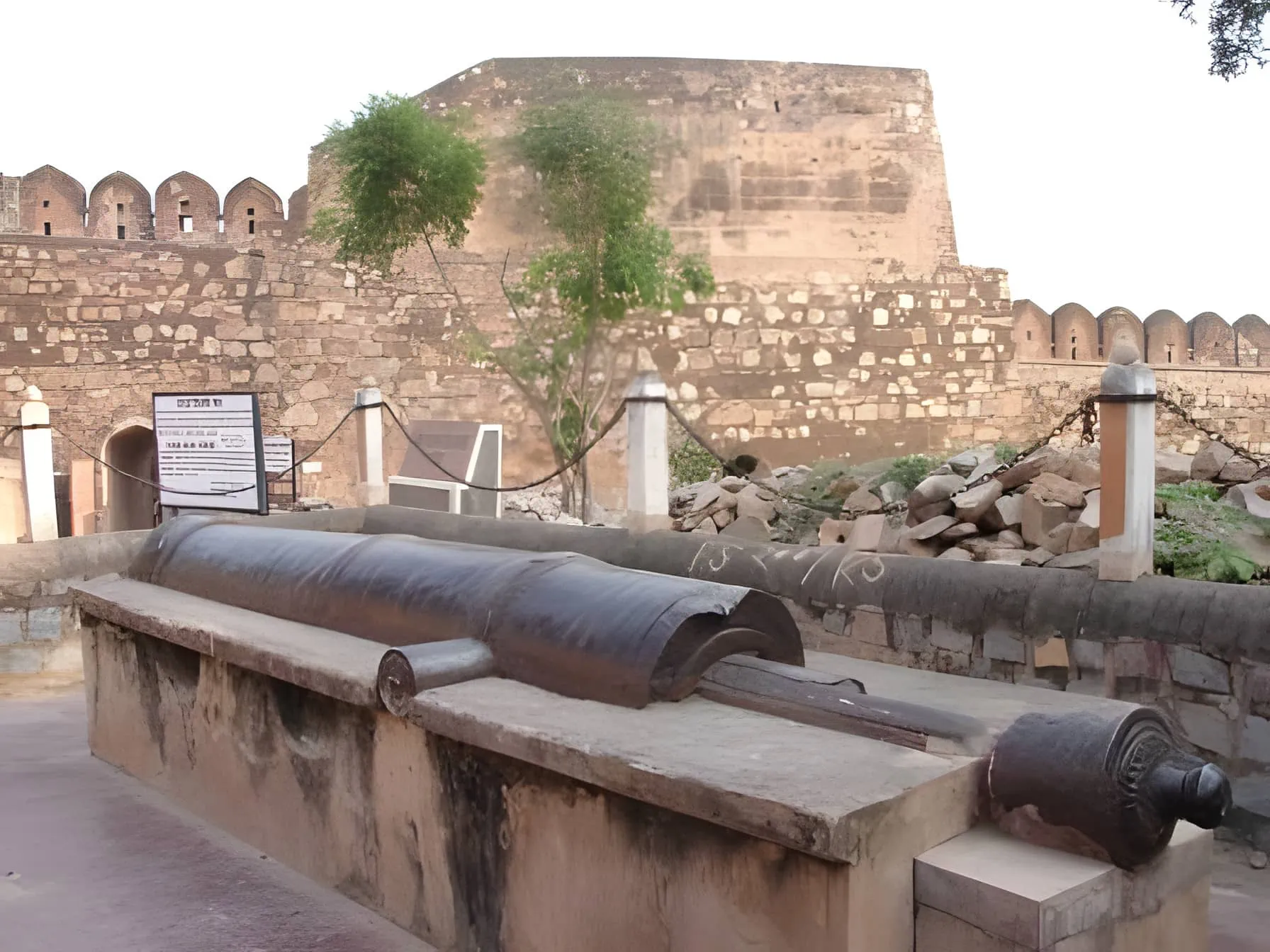
The rebellion of Rani Lakshmi Bai against British General Hugh Rose
Finally, in the month of March, the British army reached Jhansi. General Hugh Rose, saw the increased defenses at Jhansi fort so asked Rani Lakshmibai to surrender, otherwise there would be destruction everywhere. Queen Lakshmibai of Jhansi thought and decided to fight.
Lakshmibai said at that time,
“We will fight for freedom. If victory is ours, then we will know the taste of freedom, and if we get defeated, our spirit will be accelerated by giving our lives on the battlefield.”
First war Rani Lakshmibai against the British
From March 24, 1858, the English cannons bombarded the fort and destructed some defensive walls. Party of queen also fired the heavy artillery.
The Jhansi army repaired the fallen walls overnight. Also, Rani sought the help of her childhood friend, Tatya Tope. He immediately sent 20,000 troops.
But still they failed to save Jhansi. The British finally broke down the walls of the Jhansi fort on April 2, 1858, and two divisions of the army entered the fort. There was strong opposition everywhere in the palace and outside.
Rani Lakshmibai is safely out of the fort
Meanwhile, Rani took her horse named Badal and jumped from the fort wall. After covering some distance, the horse died. But later, she managed to escape out from the range of British soldiers. She united with her friend Tatya Tope in the anti-British rebel army.
Later, the city of Kalpi was captured under the leadership of the queen, and they prepared for its defense. British forces attacked again on May 22. Rani Lakshmibai herself led this time. But, unfortunately, again her army defeated.
Last struggle of Lakshmibai from Gwalior fort
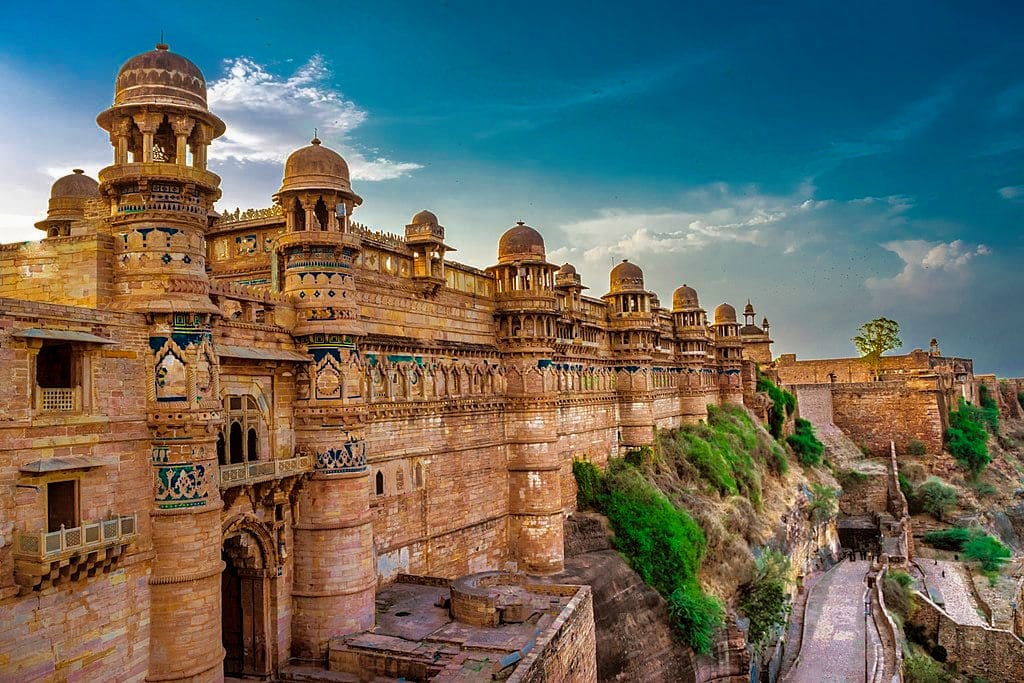
Later, along with Rani Lakshmibai, Nawab Banda, Tatya Tope and Rao Saheb, he encamped at the fort of Gwalior. Nana Saheb was declared Peshwa by the consensus of all the troops there.
The attempt of Rani Lakshmi Bai to unite the other rebels of India and use the Gwalior Fort against the British also failed. As the other rebels did not agree to unite at that fort and they wanted to fight from their native place. So, at the Gwalior fort again, anti-British forces faced defeat.
Total number of Battles fought
Lakshmibai planned many plans against the British army and fought three wars given below in her lifetime.
First battle
The Queen of Jhansi fought against the British East India Company to defend Jhansi. They fought the first battle at Jhansi on March 24, 1858, but she failed in her mission to defend Jhansi.
So, she has to go to Kalpi to join the army of Tatya Tope and Nana Saheb.
Second Battle
Rani Laxmi Bai, along with Tatya Tope and Nana Saheb, fought with the British on May 22, 1858. But rebellions failed in defending the British army, and they had to run away to Gwalior.
Third Battle
Indians fought this battle in Gwalior near Phool Bagh on June 16, 1858. Rani Laxmi Bai led the Battle of Gwalior, and this became her last battle.
Death
This is another controversial topic. Rani Laxmi Bai died at the early age of 29 on June 17, 1858. According to British records, she was seriously injured in her last battle. Then, she died of a gunshot on the battleground of Gwalior near Phool Bagh while leading the war.
According to another belief, sitting on the pyre, Rani Lakshmibai asked the Christian monks to burn her bodies alive.
Even though it was in records of the enemy of queen Lakshmibai, which can be easily manipulated. Still, because of literary records, her death with a gunshot believed to be true.
Read here more biographies of other inspiring freedom fighters at one place.
10 Points About Rani Lakshmibai
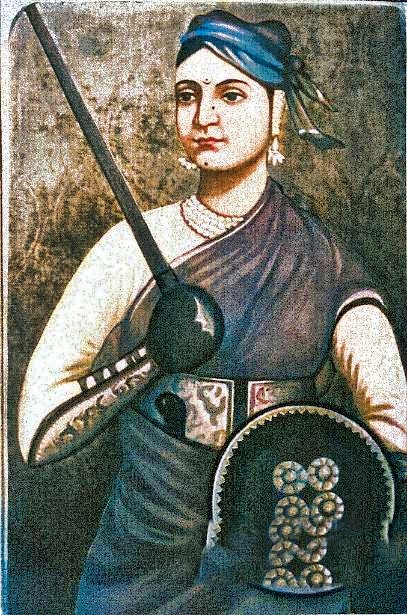
- The father of Rani Lakshmibai was Moropant Tambe, and he used to work as a political advisor of Peshwa Bajirao II. Her mother was Bhagirathi Bai Tambe.
- Lakshmibai took birth in Varanasi, which was one of the religious centers of India.
- Rani Lakshmibai was Manikarnika before marriage. After marriage, her husband renamed her as “Lakshmibai.”
- The meaning of Manikarnika is the bejeweled earring. Before marriage, everyone called her as Manu, and Peshwa Bajirao II used to call her with the nickname Chabili.
- After her birth, she grew up in the Palace of Peshwa with her friends, Nana Saheb and Tatya Tope.
- At her time, women could not take education, but as she grew up in Peshwa Palace, she was free to take education and read literature and books.
- She never thought of war against the British monarchy until the British Governor withdrew the claim to the throne of Jhansi.
- Despite losing her family at an early age, she stood against the British army.
- In her lifetime, she fought three major battles during the war of 1857. She lost every battle but still furiously struggled until the last breath.
- She led the army during the battle of Gwalior in which she was seriously injured. British records tell that she died due to a fired bullet by a British soldier.
FAQs
Who was Rani Lakshmibai?
Indian Queen of Jhansi who became a rebellion against the British Monarchy. She fought three wars in her lifetime.
Though she did not win the battle against the British, we identified her as the prominent women revolutionary.
How did Rani Laxmi Bai die?
There are two theories behind the death of Rani Lakshmibai.
First theory says that she sat on the pyre, and asked the Christian priests to fire.
The second theory is that she died because a British soldier fired a bullet at her. This theory is mentioned in the British records.
How to wear Rani Lakshmibai saree?
There were two ways you could wear the saree. The first easy way is to get one ready — made saree from online stores.
The second way is to get a Nauvari saree and wear the Nauvari with the help of tutorials.
Pro Tip: You can also sew that saree offline from your favorite tailor. So you do not have to struggle while wearing it.
How did Rani Laxmi Bai son die?
I hope you like this Astonishing Rani Laxmi Bai Biography. Please don’t forget to share this biography with your family and friends.
You can also check out the history of the popular women freedom fighters in India.
Was Newalkar were belong to Maratha?
Yes, while
Image Credits
1. Portrait Painting of Rani Lakshmibai holding sword in hands and wore Nauvari Saree, Credit: The Lost Gallery, Source: Flickr
2. Rani Lakshmibai Statue, Credit: juggadery
3. Rani Lakshmibai painting, Source: Wikipedia (Public Domain)
4. Cannon on Jhansi fort named as Kadak Bijli, Credit: Himanshu Khare, Source: Wikipedia (Public Domain)
5. Marvelous structure of Gwalior Fort, Credit: Anuppyr007, Source: Wikipedia
About the Author

Ashish Salunke
Ashish is a skilled biographer and content writer specialized in crafting captivating historical narratives. Through HistoricNation, he skillfully merged his IT expertise with the art of storytelling.
